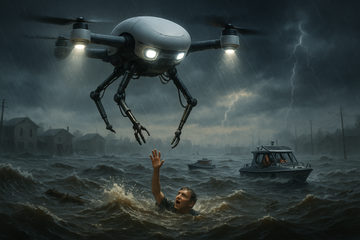In recent years, it’s become clear that extreme weather events—especially floods—are no longer rare. From rising sea levels to more intense rainstorms, communities around the world are facing real challenges. For rescue teams on the front lines, the old ways of doing things aren’t always enough.
So what needs to change? The answer is simple: water rescue technology must evolve.
🌧️ The Problem: Floods Are Getting Worse, Not Better
Let’s face it—climate change is pushing us into uncharted territory. Floods are hitting harder, coming faster, and lasting longer. Urban areas with poor drainage, rural towns near rivers, and even coastal cities are all at higher risk than before.
Here’s what’s happening:
-
Stronger storms dump more rain in shorter periods
-
Drainage systems can’t handle the load
-
Rivers overflow, trapping people in cars, homes, or streets
-
Rescue response times are delayed by blocked roads and unsafe conditions
In this new reality, speed, precision, and safety are more important than ever.
🛠️ What Users Are Telling Us
From fire departments to local governments, from emergency volunteers to private rescue contractors—we hear the same concerns over and over again:
-
“By the time we get to the scene, the situation has already worsened.”
-
“Our current gear isn’t built for fast-moving water or large-scale urban flooding.”
-
“We need tools that keep our teams safe while helping more people.”
They’re not wrong. Traditional lifebuoys, ropes, and boats—while still useful—simply can’t match the scale and speed of today’s disasters.
🚁 The Solution: Smarter, Safer, Faster Tech
It’s time to rethink how we do water rescues.
Modern technology now allows for remote-controlled, GPS-enabled, and AI-assisted equipment to support rescue missions. These tools don’t replace human rescuers—but they extend what teams can do, especially when time and safety are on the line.
Let’s take a closer look at one example:
🛟 Meet the JX-6A Water Rescue Drone
(A smarter way to reach those in danger)
This isn’t science fiction—it’s real, field-tested equipment designed for today’s toughest conditions.
Key features include:
-
Remote control lets rescue teams guide the drone right to the person in the water
-
190N of buoyancy, enough to support an adult in rough waves
-
Bright color and flashing lights for high visibility in dark or stormy weather
-
Rugged waterproof body built to withstand floods, waves, and rain
-
One-person operation, saving time and manpower during large emergencies
And unlike traditional flotation devices, the JX-6A can be flown out quickly—over rivers, urban floods, or even from a bridge—reaching victims before conditions worsen.
👉 For government agencies, fire and rescue departments, or even industrial park security teams, this can make the difference between a rescue and a tragedy.

💡 Real-World Example: Urban Flood Response in Asia
During a sudden downpour in a large Chinese city, streets turned into rivers within minutes. Cars were submerged. Pedestrians were trapped. Local responders deployed a JX-6A from a rooftop and reached a man stuck in a sinkhole of swirling floodwater. The drone gave him the floatation support he needed—long before a boat could arrive.
This isn’t just about cool tech—it’s about saving lives when seconds count.
✅ How You Can Prepare
If you’re involved in emergency response, safety planning, or infrastructure risk management, here’s what we recommend:
-
Audit your current water rescue tools—Are they built for today’s flood risks?
-
Train your team on modern tech like rescue drones—they’re easier to use than you think.
-
Invest in scalable solutions that work across different terrains—urban, coastal, riverside.
-
Stay informed—climate change is evolving fast, and rescue strategy needs to keep pace.
📦 Want to Learn More?
At DIDIOK MAKINGS, we design water rescue gear for real-world emergencies. Whether you need a single JX-6A drone or a full flood-response toolkit, our team is here to help.
Click [Contact Us] or chat with our team to find out how our solutions can support your mission.
Floods aren’t waiting. Neither should we.
Let’s get ahead of the next emergency—together.





